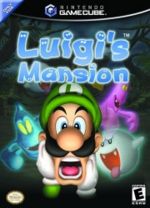Difference between revisions of "Luigi's Mansion"
(→Legacy) |
|||
| Line 26: | Line 26: | ||
=Legacy= | =Legacy= | ||
| − | Although the game | + | Although the game did not receive an official follow-up for over a decade, the game itself has become a vital part of Luigi's character. The actual mansion itself is the basis for many ''Mario Kart'' tracks, tennis courts, and locales for other spinoff games, including a stage in ''[[Super Smash Bros. Brawl]]''. |
| − | Luigi's 'scaredy-cat' personality is carried over into [[Mario & Luigi: Superstar Saga]]. The character E. Gadd has likewise made a few appearances and is credited for several inventions in later Mario games. | + | Luigi's 'scaredy-cat' personality is carried over into ''[[Mario & Luigi: Superstar Saga]]'' and has some reference in most later ''Mario'' games. The character E. Gadd has likewise made a few appearances and is credited for several inventions in later Mario games. |
==Sequels== | ==Sequels== | ||
| − | + | Over a decade after the original was released, it finally received a sequel in the form of ''[[Luigi's Mansion: Dark Moon]]'' for the [[3DS]]. | |
=See Also= | =See Also= | ||
Revision as of 07:17, 16 December 2014

| |
| Luigi's Mansion | |
| Developer | Nintendo |
| Publisher | Nintendo |
| System | Gamecube |
| Release Date | JP September 14, 2001 US November 18, 2001 EU May 3, 2002 |
| Gallery | GH Gallery |
| Rating | ESRB: E |
Luigi's Mansion was one of the launch titles for the Nintendo Gamecube. This launch marked a first since it did not feature a Mario game at launch, but starred the younger brother, Luigi, instead.
Story
Luigi finds out he won a mansion in a contest he didn't even enter. Mario goes to check out the mansion and disappears, forcing Luigi to go in alone. Within the mansion Luigi finds trap after trap set up by the evil ghosts of the mansion. Luckily Luigi mets an eccentric old inventor, Professor E. Gadd, who provides him with ghost-catching technology in the form of the Poltergust 3000.
Gameplay
This is Luigi's first official solo adventure (excluding Mario is Missing), and its gameplay is different from other Mario games. Luigi explores the mansion room-by-room, finding the ghosts within, shining his flashlight on them and sucking them into the vacuum-like Poltergust. There are twenty-three special ghosts that can only be captured when certain conditions are met. There are also a number of Boos that also must be caught.
One of his tools, The Game Boy Horror, has a built-in map and can be used to scan objects and provide vital clues. Along the way Luigi also collects money- not only coins, but dollar bills, pearls and jewels, that will come into play at the end of the game. Luigi also finds three elemental medals that allow him to shoot fire, ice and water from his Poltergust.
Legacy
Although the game did not receive an official follow-up for over a decade, the game itself has become a vital part of Luigi's character. The actual mansion itself is the basis for many Mario Kart tracks, tennis courts, and locales for other spinoff games, including a stage in Super Smash Bros. Brawl.
Luigi's 'scaredy-cat' personality is carried over into Mario & Luigi: Superstar Saga and has some reference in most later Mario games. The character E. Gadd has likewise made a few appearances and is credited for several inventions in later Mario games.
Sequels
Over a decade after the original was released, it finally received a sequel in the form of Luigi's Mansion: Dark Moon for the 3DS.